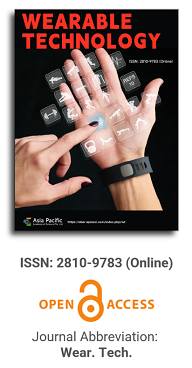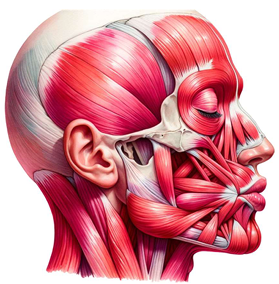

This paper delves deeply into the innovative realm of integrating human emotions with wearable technology. The primary focus is on the conceptualization and development of a kiss transfer device that harnesses the power of wearable technology to bridge the physical gap in human-human interactions. By investigating the intricate nuances of the human-human kissing process, the research seeks to replicate this intimate gesture through a technological medium. The paper not only elaborates on the anatomy, evolution, and hormonal dynamics of kissing but also underscores the transformative potential of wearable technology in capturing and transmitting these intimate moments. This exploration opens up new horizons for long-distance relationships, offering a tangible touchpoint that goes beyond traditional communication methods. Through this pioneering work, the research positions wearable technology as not just a tool for communication but as an extension of our human emotions and expressions.

Wireless vibrotactile wireless optical device for motor activity assistance motor activities
Vol 3, Issue 1, 2022
Download PDF
Abstract
Keywords
References
- Beers MH, Berkow R. The Merck manual of diagnosis and therapy. New Jersey: Merck Research Laboratories; 1999. p. 283–292.
- Frisoli A, Salsedo F, Bergamasco M, et al. A forcefeedback exoskeleton for upper-limb rehabilitation in virtual reality. Applied Bionics and Biomechanics 2009; 6(2): 115–126.
- Padilla-Castaneda AM, Sotgiu E, Frisoli A, et al. (editors). A virtual reality system for robotic-assisted orthopedic rehabilitation of forearm and elbow fractures. IEEE/RSJ International Conference on Intelligent Robots and Systems; 2013 Nov 3–8; Japan. NYC: IEEE; 2013. p. 1506–1511.
- Cameirao SM, Bermúdez S, Duarte E, et al. The combined impact of virtual reality neurorehabilitation and its interfaces on upper extremity functional recovery in patients with chronic stroke. Stroke 2012; 43(10): 2720–2728.
- Frisoli A, Procopio C, Chisari C, et al. Positive effects of robotic exoskeleton training of upper limb reaching movements after stroke. Journal of Neuro Engineering and Rehabilitation 2012; 9(1): 1–16.
- Chirivella J, Barco A, Blasco S, et al. Neuro@home A software platform of clinically designed videogames designed for the cognitive rehabilitation of stroke patients. Brain Injury 2014.
- Faria AL, Andrade A, Soares L, et al. Benefits of virtual reality based cognitive rehabilitation through simulated activities of daily living: a randomized controlled trial with stroke patients. Journal of Neuro Engineering and Rehabilitation 2016; 13(1).
- Badesa FJ, Morales R, Garcia-Aracil N, et al. Auto adaptive robot-aided therapy using machine learning technique. Computer Methods and Programs in Biomedicine 2014; 116(2): 123–130.
- Giggins OM, Persson UM, Caulfield B. Biofeedback in rehabilitation, Journal of Neuro Engineering and Rehabilitation 2013; 10(1).
Supporting Agencies
Copyright (c) 2022 Jonathan Roberto Torres Castillo, Juan Salvador Pérez Lomelí, Esperanza Camargo Casallas, Miguel Ángel Padilla Castañeda

This work is licensed under a Creative Commons Attribution 4.0 International License.

Prof. Zhen Cao
College of Information Science & Electronic Engineering, Zhejiang University
China, China
Processing Speed
-
-
-
- <5 days from submission to initial review decision;
- 62% acceptance rate
-
-
Asia Pacific Academy of Science Pte. Ltd. (APACSCI) specializes in international journal publishing. APACSCI adopts the open access publishing model and provides an important communication bridge for academic groups whose interest fields include engineering, technology, medicine, computer, mathematics, agriculture and forestry, and environment.





